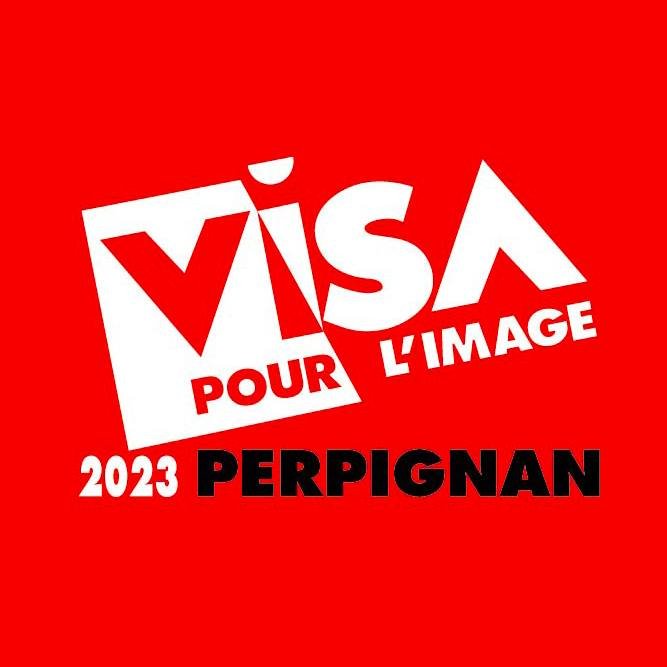
Visa pour l’Image
Visa pour l’Image | Perpignan
30. August – 14. September 2025
37e édition
Visa pour l'Image-Perpignan ist ein internationales Festival für Fotojournalismus, das 1989 von Roger Thérond, dem damaligen Redaktionsleiter von Paris-Match, gegründet wurde. Er hatte die Organisation des Festivals Michel Decron anvertraut, dem Leiter der Zeitung Photo der Filipacchi-Gruppe.
Unter der Leitung von Jean-François Leroy findet Visa pour l'Image jedes Jahr im September drei Wochen lang im Stadtzentrum von Perpignan statt (die dritte Woche ist den Schulklassen vorbehalten).
Visa pour l'Image ist das weltweit größte öffentliche und kostenlose Festival für Fotojournalismus mit fast 200.000 Besuchern, 10.000 Schulklassen und 3.000 Fachleuten.
Im April 2019 wird Renaud Donnedieu de Vabres, Präsident des Vereins Visa pour l'Image-Perpignan.
Visa pour l’Image-Perpignan est un festival international de photojournalisme créé en 1989, par Roger Thérond, alors directeur de la rédaction de Paris-Match. Il en avait confié l’organisation à Michel Decron, directeur du journal Photo du groupe Filipacchi.
Dirigé par Jean-François Leroy, Visa pour l’Image se déroule chaque année au mois de septembre dans le centre ville de Perpignan, pendant trois semaines (la troisième semaine étant réservée aux scolaires).
Visa pour l’Image est le plus important festival de photojournalisme public et gratuit au monde, avec une fréquentation de près de 200 000 visiteurs, 10 000 scolaires et 3 000 professionnels.
En avril 2019, Renaud Donnedieu de Vabres, devient président de l’association Visa pour l’Image-Perpignan.
Visa pour l'Image-Perpignan è un festival internazionale di fotogiornalismo creato nel 1989 da Roger Thérond, allora direttore di Paris-Match. Egli ne affidò l'organizzazione a Michel Decron, direttore della rivista Photo del gruppo Filipacchi.
Diretto da Jean-François Leroy, Visa pour l'Image si svolge ogni anno a settembre nel centro di Perpignan, per un periodo di tre settimane (la terza settimana è riservata alle scuole).
Visa pour l'Image è il più grande festival pubblico e gratuito di fotogiornalismo al mondo, con quasi 200.000 visitatori, 10.000 scolari e 3.000 professionisti.
Nell'aprile 2019, Renaud Donnedieu de Vabres diventerà presidente dell'associazione Visa pour l'Image-Perpignan.
Visa pour l'Image-Perpignan is an international photojournalism festival founded in 1989 by Roger Thérond, then editorial director of Paris-Match. He entrusted its organization to Michel Decron, director of the Filipacchi group's Photo magazine.
Directed by Jean-François Leroy, Visa pour l'Image takes place every year in September in downtown Perpignan, over a three-week period (the third week is reserved for schools).
Visa pour l'Image is the largest free public photojournalism festival in the world, with an attendance of almost 200,000 visitors, 10,000 schoolchildren and 3,000 professionals.
In April 2019, Renaud Donnedieu de Vabres will become president of the Visa pour l'Image-Perpignan association.
(Text: Visa pour l'image, Perpignan)






















































